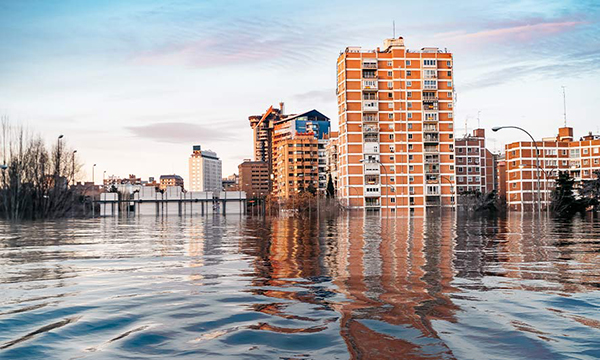2023 was a banner year for extreme weather, and 2024 may be no different.
By Andy Simmons, Head of Large Property, and Robert Sullivan, Real Estate Industry Practice Leader
As evidenced by the extraordinary heat in the Southwest, a string of tornadoes in South and Midwest, and heavy rains in California and Florida, 2023 was a banner year for extreme weather. However, 2024 may be no different, which means now is the time for businesses to rethink the way they approach volatile weather, as well as the frequency and severity of storms and natural disasters.
The risks and challenges that businesses face as extreme weather becomes stronger and causes more property damage, requires innovative technology with specialized insurance solutions. Through updated building codes, advancements in technology, and meaningful infrastructure improvements, businesses can make a difference in protecting their property and reducing losses. Now is the time for carriers and brokers to act for their commercial business customers.
It is not uncommon to see the destruction that a hurricane or tornado leaves behind. However, stronger building codes are one of the best ways to make sure property can withstand catastrophes. Florida for example implemented changes to its building codes after Hurricane Andrew, and then again in 2007 after the Hurricanes of 2004 and 2005. New construction since then has made houses and buildings significantly more hurricane proof. Buildings constructed 30 years ago were likely built with codes that may have neglected the impact of strong winds from an extreme hurricane or significant rainfall that a storm can bring, especially along the Atlantic and Gulf coasts.

Advancements in technology have also led to devices and building materials that can help protect a building in severe storms. Connected devices can monitor buildings and identify problem areas with leaks. As usual, after a storm passes, it is always good to check and document any initial damages. Sometimes, storm damage can lead to large property losses because of water. By installing water sensors in a building, owners and managers can get alerts of water intrusion or leaks. This is particularly important if the building or facility has had a history of water damage because these kinds of devices can capture an issue before it becomes a major loss. The difference in damage costs from being able to quickly respond to a leak compared to not realizing something happened and letting hours go by is significant.
While many existing buildings may not have been built to withstand storms or water damage, owners can make them storm hardened. This means improving the infrastructure to better withstand these kinds of losses. By storm-hardening a building, owners can help prevent potential damage from heavy winds and water. While it can be a nominal upfront cost, the return on investment can be significant. For example, improving the framing inside a building can make a facility stronger and reduce the amount of potential damage during strong winds from a hurricane or tornado.
Building owners can also ensure that there is proper drainage and flood protection during construction to help reduce the loss of equipment or inventory. It is a good idea to conduct a storm-hardening assessment of the building to provide a starting point of what areas to address and what can be done. Some structural areas to look at include building envelope evaluation, wall types, roof types, windows, doors, exterior drainage, and landscaping. In addition, it is prudent to note the location of air handling units, water supply, critical electrical or mechanical equipment, and whether an emergency generator has enough capacity to deliver the necessary power during an outage.
Other considerations for building owners and property managers include installing stronger walls or shatter-resistant windows in their facilities, which can help prevent water from ever entering the building. In addition, they can keep the people inside the building safe during harsh weather because if a window were to break, the glass won’t scatter all over.
While it is difficult to predict what the future will look like when it comes to storms and extreme weather, it is important for building owners, property managers and developers to partner with an experienced carrier who can help protect facilities and mitigate losses.
About the Authors:
Andy Simmons is Head of Large Property at The Hartford. He has more than 16 years of experience in the property insurance business specializing in underwriting and risk engineering.
Robert Sullivan is the Real Estate Industry Practice Lead for The Hartford’s Middle and Large Commercial segment. With more than 30 years of underwriting experience, Robert specializes in the real estate, retail, restaurant, and hotel industry sectors
In this episode, I sat down with Beejan Giga, Director | Partner and Caleb Emerson, Senior Results Manager at Carpedia International. We discussed the insights behind their recent Industry Today article, “Thinking Three Moves Ahead” and together we explored how manufacturers can plan more strategically, align with their suppliers, and build the operational discipline needed to support intentional, sustainable growth. It was a conversation packed with practical perspectives on navigating a fast-changing industry landscape.